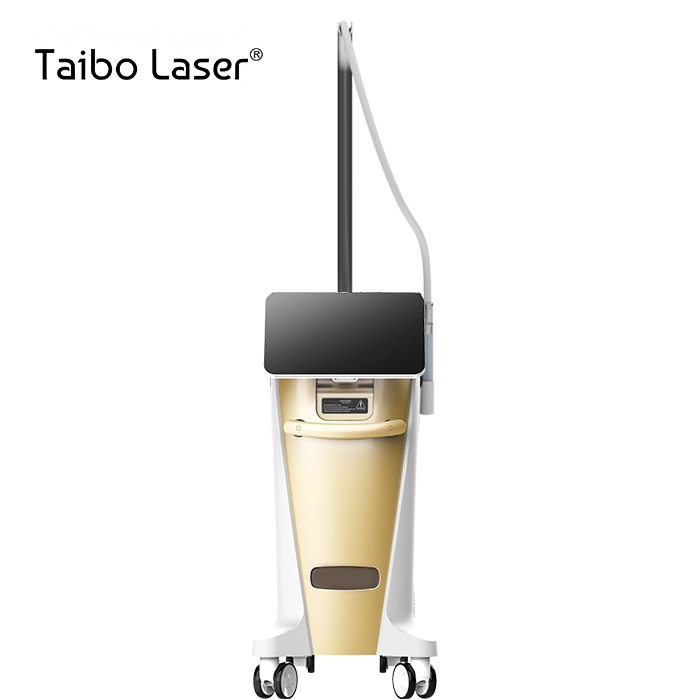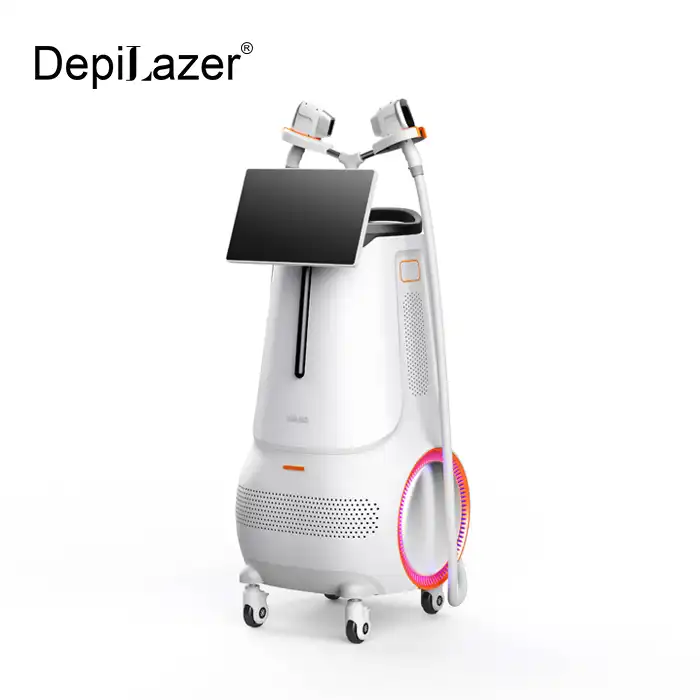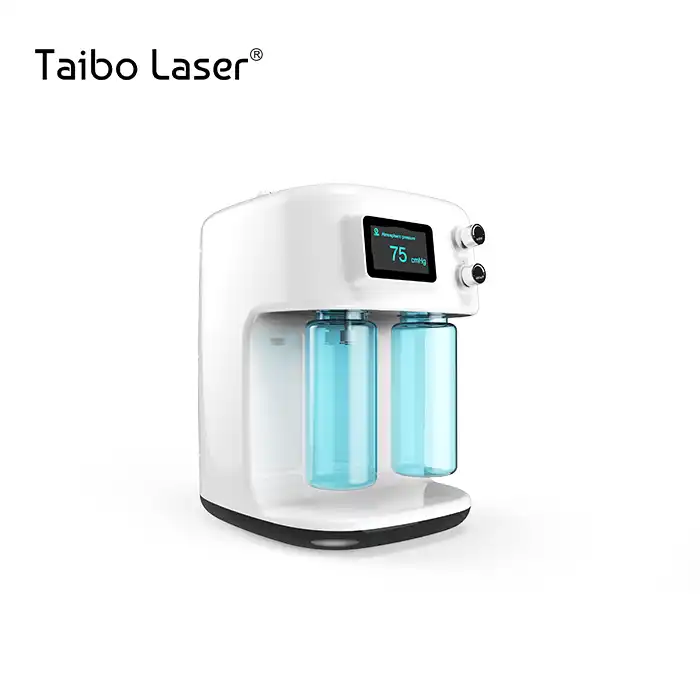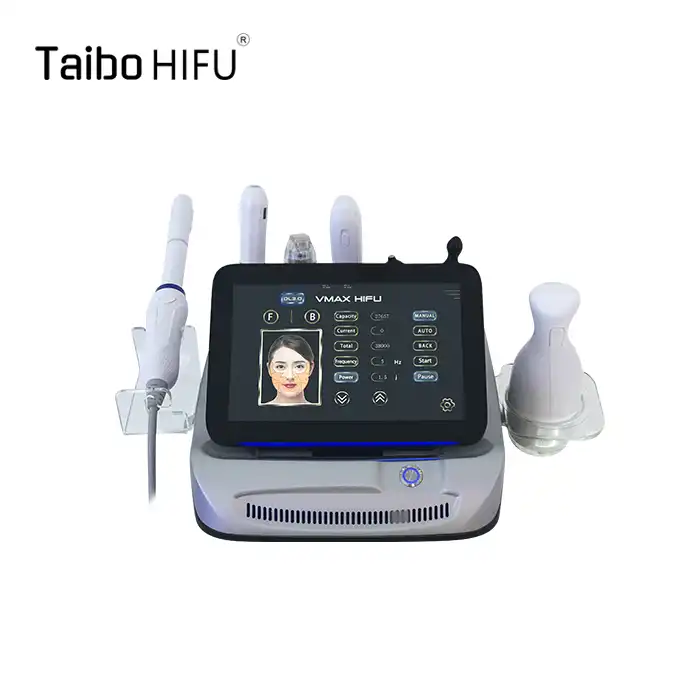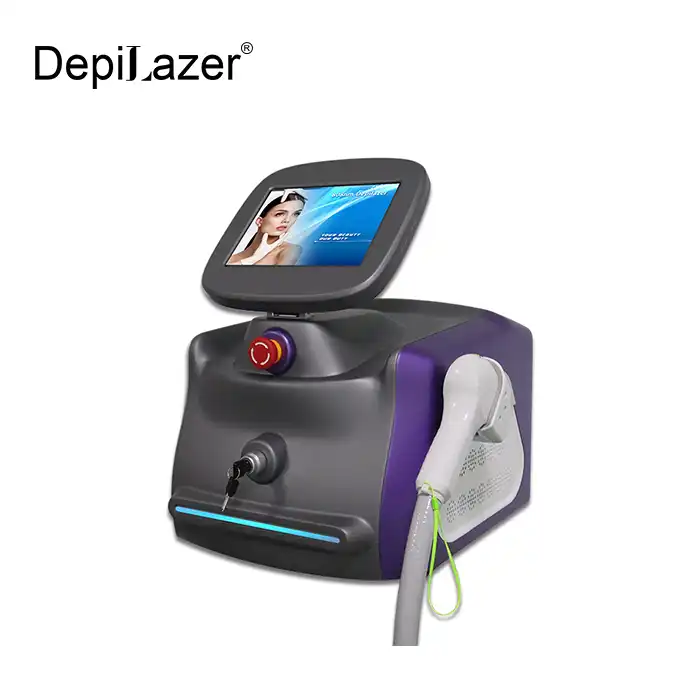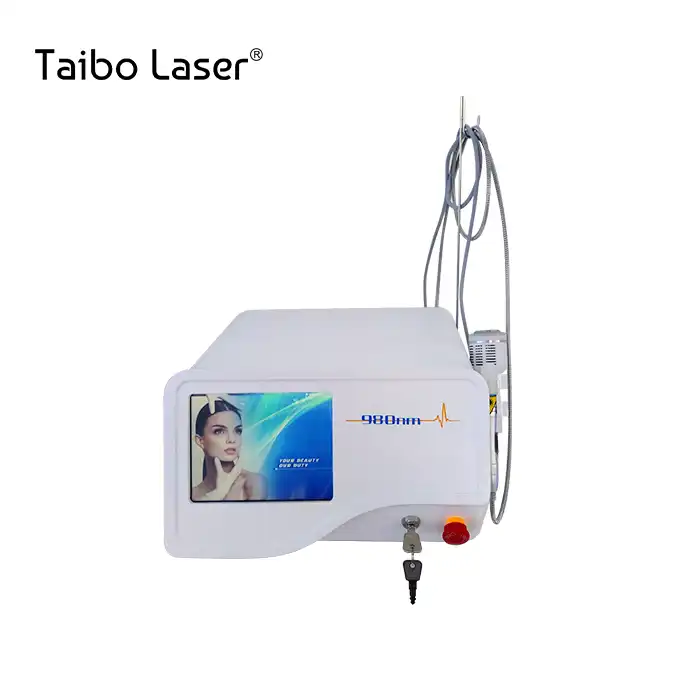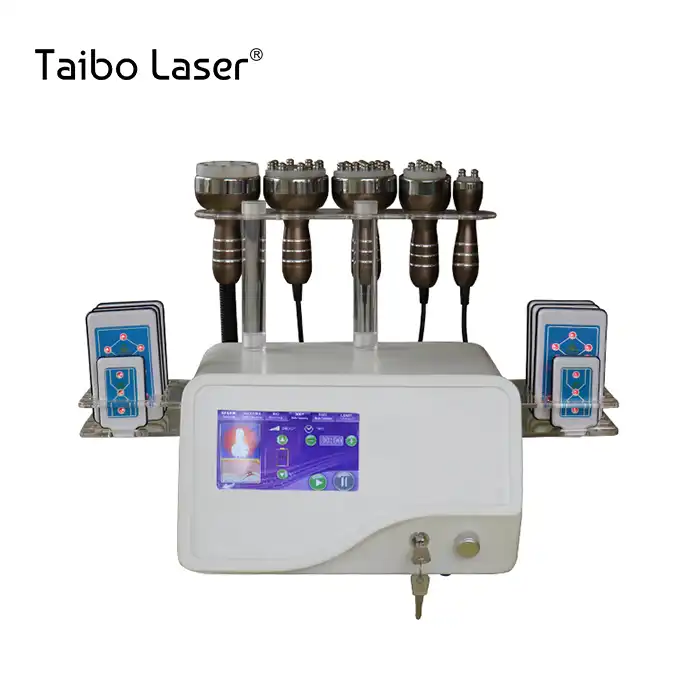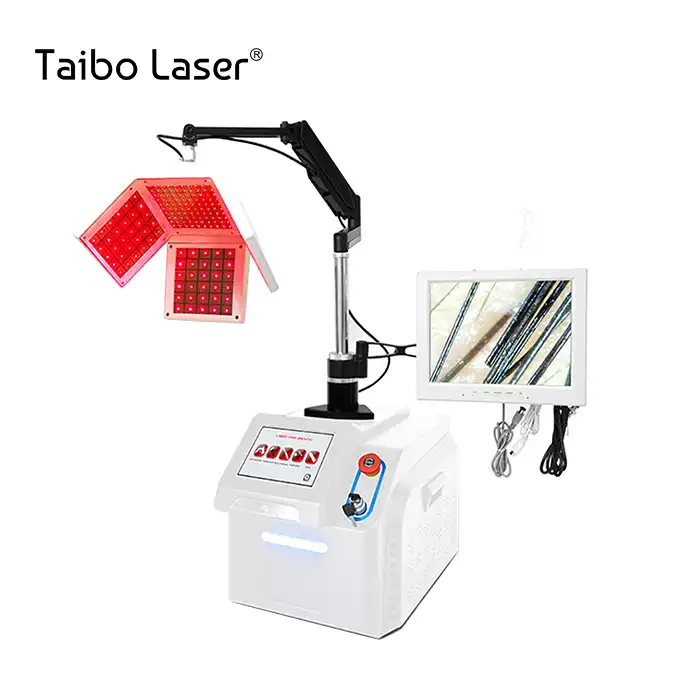
What does a fractional CO2 laser do?
2025-10-14 09:23:50
If you've ever looked in the mirror and felt frustrated by acne scars that won't fade, deep wrinkles that make you look older than you feel, or uneven skin texture that no cream seems to fix, you're not alone. The fractional co2 laser represents a breakthrough solution for these stubborn skin concerns. This advanced technology delivers controlled laser energy to precisely target damaged skin layers, triggering natural collagen production and revealing smoother, younger-looking skin. Understanding what a fractional co2 laser does and how it works can help you make informed decisions about achieving the radiant, confident complexion you deserve.
How Does Fractional CO2 Laser Technology Work?
The fractional co2 laser operates on a sophisticated principle that combines precision targeting with natural healing processes. Unlike traditional ablative lasers that affect the entire skin surface, this technology creates thousands of microscopic treatment zones while leaving surrounding tissue intact. The laser emits light at a wavelength of 10,600 nanometers, which water molecules in skin cells readily absorb. When the fractional co2 laser energy penetrates the skin, it creates controlled thermal injury in tiny columns extending into the dermis. This process initiates three critical actions: vaporization of damaged tissue, coagulation of proteins, and carbonization of cellular structures. The untreated skin between these micro-thermal zones serves as a reservoir for healing, significantly reducing recovery time compared to older resurfacing methods. Within days, the body's natural repair mechanisms activate, producing fresh collagen and elastin fibers that restructure the skin from within. This regenerative process continues for months after treatment, delivering progressive improvements in skin quality and appearance.
-
The Science Behind Micro Thermal Zones
The creation of Micro Thermal Zones represents the core innovation that makes fractional co2 laser treatment so effective. Each pulse from the fractional co2 laser generates precisely controlled columns of thermal damage measuring approximately 0.1 millimeters in diameter. These microscopic wounds extend through the epidermis into the papillary and reticular dermis, reaching depths adjustable from 0.1 to 4 millimeters depending on treatment goals. The strategic spacing between these zones ensures that roughly 70-80% of skin remains untouched during any single treatment session. This preserved tissue contains viable cells, blood vessels, and nerve endings that immediately begin migrating into damaged areas to facilitate rapid healing. The thermal energy stimulates fibroblast activity, triggering the production of type I and type III collagen while simultaneously removing aged, damaged collagen structures. Clinical studies demonstrate that fractional co2 laser treatments can increase dermal collagen density by up to 45% over six months, resulting in measurably firmer, thicker skin with improved mechanical properties.
-
Water Absorption and Tissue Interaction
The fractional co2 laser wavelength specifically targets water content in skin tissue, making it exceptionally effective for controlled ablation and remodeling. Human skin contains approximately 70% water, providing abundant chromophores for laser energy absorption. When photons from the fractional co2 laser strike water molecules, they convert light energy into thermal energy almost instantaneously. This rapid heating causes intracellular and extracellular water to vaporize at temperatures exceeding 100 degrees Celsius, resulting in immediate tissue removal. The precision of modern fractional co2 laser systems allows practitioners to adjust energy density from 5 to 150 millijoules per microbeam, controlling ablation depth and thermal spread with remarkable accuracy. This selectivity minimizes collateral heat damage to surrounding structures while maximizing treatment efficacy. The relatively low absorption of melanin and hemoglobin at this wavelength reduces the risk of pigmentation changes and vascular complications, making fractional co2 laser treatment suitable for diverse skin types when properly calibrated.
Primary Applications and Treatment Capabilities
The versatility of fractional co2 laser technology extends across numerous dermatological and aesthetic applications, addressing both medical and cosmetic concerns. For acne scar revision, the fractional co2 laser penetrates deep into the dermis to break down fibrous scar tissue while stimulating new collagen formation that gradually fills depressed areas. Patients with ice pick, boxcar, and rolling scars typically experience 50-75% improvement after a series of treatments. Wrinkle reduction represents another major application, with the fractional co2 laser effectively smoothing periorbital lines, forehead creases, and perioral wrinkles by tightening existing collagen and generating new support structures. Photodamaged skin characterized by rough texture, uneven pigmentation, and solar lentigines responds excellently to fractional co2 laser resurfacing, which removes damaged epidermal cells and reverses dermal elastosis. The technology also addresses benign lesions including seborrheic keratoses, epidermal nevi, and xanthelasma, offering precise removal with minimal scarring.
-
Advanced Skin Resurfacing and Rejuvenation
Comprehensive skin resurfacing with fractional co2 laser technology delivers transformative results that extend far beyond superficial improvements. The treatment systematically removes the damaged epidermis while simultaneously remodeling the underlying dermis, creating a complete renewal of skin architecture. Practitioners can customize the fractional co2 laser parameters to address specific concerns, adjusting spot size from 0.1 to 1.2 millimeters, energy levels from 1 to 40 watts, and pulse duration to achieve optimal outcomes for each patient's unique condition. The controlled ablation removes accumulated sun damage, irregular pigmentation, and dyschromic lesions that contribute to aged appearance. Simultaneously, the thermal stimulation activates dormant fibroblasts, initiating a cascade of wound healing responses that produce robust collagen and elastin networks. Patients typically notice immediate improvements in skin smoothness and tone, with continued enhancement over the following 3-6 months as neocollagenesis progresses. The fractional co2 laser treatment effectively addresses concerns that previously required multiple procedures, offering comprehensive rejuvenation in fewer sessions with predictable outcomes.
-
Scar Revision and Texture Improvement
Scar treatment represents one of the most rewarding applications of fractional co2 laser technology, offering hope to patients who have struggled with disfiguring marks for years. The fractional co2 laser approach to scar revision works through multiple mechanisms: breaking down organized collagen bundles within scars, stimulating production of properly oriented collagen in the extracellular matrix, and improving vascularity to normalize tissue oxygenation. For hypertrophic scars and keloids, the laser energy disrupts the excessive collagen deposition while promoting remodeling into more normal tissue architecture. Atrophic scars benefit from the powerful collagen-stimulating effects of fractional co2 laser treatment, which gradually raises depressed areas to match surrounding skin levels. Surgical scars, traumatic scars, and burn scars all demonstrate significant improvement with appropriate fractional co2 laser protocols. The technology also excels at improving overall skin texture irregularities caused by enlarged pores, uneven surface topography, and rough patches that develop from chronic photodamage or environmental exposure.
Technical Specifications and Machine Capabilities
Modern fractional co2 laser systems incorporate sophisticated engineering that enables precise, safe, and effective treatments across diverse clinical scenarios. Advanced machines like those manufactured by Xi'an Taibo Laser Beauty Company feature adjustable parameters that give practitioners complete control over treatment outcomes. The laser wavelength of 10.6 micrometers remains constant, optimized for water absorption and tissue interaction. Power outputs ranging from 1 to 40 watts allow customization based on treatment area, skin type, and desired aggressiveness. Multiple operation modes expand treatment versatility: dot matrix mode creates uniform patterns of microbeams, pulse mode delivers controlled energy bursts in long pulse and ultra pulse configurations, while specialized private and vulvar modes address intimate area concerns with appropriate safety parameters. Water cooling systems maintain optimal operating temperatures, ensuring consistent laser performance and patient comfort throughout extended treatment sessions. The seven-joint articulated arm provides exceptional maneuverability, enabling precise positioning for treating facial contours, body areas, and difficult-to-reach locations.

-
Precision Control and Customization Features
The ability to precisely control fractional co2 laser parameters represents a crucial advantage that distinguishes professional-grade systems from basic devices. Adjustable spot size allows practitioners to tailor treatment density, with smaller spots creating more aggressive resurfacing and larger spots providing gentler renewal. Energy density adjustments ranging from low to high settings enable customized treatments that match each patient's tolerance, skin type, and healing capacity. Depth control functionality permits targeting specific skin layers, from superficial epidermal treatments to deep dermal remodeling extending several millimeters below the surface. Modern fractional co2 laser systems incorporate intuitive touch screen interfaces displaying real-time parameters, making adjustments seamless during procedures. Scanning modes determine beam delivery patterns: sequential scanning treats areas systematically, while non-sequential and maximum spacing techniques prevent heat accumulation and minimize discomfort. These sophisticated controls transform the fractional co2 laser from a simple tool into a versatile platform capable of addressing virtually any skin concern with optimal safety and efficacy.
Safety Features and Quality Assurance
Patient safety remains paramount in fractional co2 laser treatments, requiring robust equipment design and rigorous quality standards. Professional-grade machines incorporate multiple safety mechanisms including emergency stop functions, automatic power cutoff systems, and treatment parameter limiters that prevent excessive energy delivery. The cooling system serves dual purposes: maintaining optimal laser performance while protecting superficial skin layers from excessive thermal damage. Indicating lights guide precise treatment application, ensuring even coverage and preventing overlapping passes that could cause unnecessary injury. Regular calibration and maintenance protocols keep fractional co2 laser systems operating within specified parameters, guaranteeing consistent results across thousands of treatment sessions. Quality manufacturing standards like ISO 13485 certification ensure every component meets medical device requirements for reliability and performance. Comprehensive operator training programs teach proper technique, appropriate parameter selection, and emergency management protocols, creating an additional safety layer that protects patients throughout their treatment experience.
-
Certifications and Compliance Standards
Professional fractional co2 laser equipment must satisfy stringent regulatory requirements before reaching clinical use. CE certification demonstrates compliance with European health, safety, and environmental protection standards, confirming that devices meet essential requirements for medical equipment. ISO 13485:2016 certification validates that manufacturers maintain comprehensive quality management systems specifically designed for medical device production, covering everything from design and development to production, installation, and servicing. These certifications provide assurance that fractional co2 laser systems undergo rigorous testing for safety, efficacy, and quality throughout their lifecycle. Electrical safety standards verify proper insulation, grounding, and protection against electrical hazards. Electromagnetic compatibility testing ensures fractional co2 laser devices neither emit excessive electromagnetic interference nor suffer susceptibility to external electromagnetic fields that could affect performance. Manufacturers pursuing FDA approval and medical CE certification demonstrate additional commitment to meeting the highest international standards for medical laser equipment, giving practitioners and patients confidence in treatment safety and reliability.
Conclusion
The fractional co2 laser delivers comprehensive skin rejuvenation through controlled micro-ablation and collagen stimulation. This technology effectively addresses wrinkles, scars, texture irregularities, and pigmentation concerns while minimizing downtime compared to traditional resurfacing. Understanding its mechanisms helps patients and practitioners achieve optimal aesthetic outcomes safely and predictably.
Cooperate with Xi'an Taibo Laser Beauty Company
As a leading China fractional co2 laser manufacturer with over 15 years of expertise, Xi'an Taibo Laser Beauty Company offers High Quality fractional co2 laser equipment backed by comprehensive support. Our China fractional co2 laser factory produces certified systems with CE, ISO13485, and FDA compliance, available through our China fractional co2 laser supplier network with competitive fractional co2 laser price options. We provide OEM/ODM customization, two-year warranties, 24-hour technical support, and professional training. Whether you need fractional co2 laser for sale for your clinic or wholesale distribution, we deliver reliable China fractional co2 laser wholesale solutions. Contact susan@taibobeauty.com today to discover how our expertise can elevate your business and bring transformative results to your clients.
References
1. Hantash BM, Bedi VP, Kapadia B, et al. "In vivo histological evaluation of a novel ablative fractional resurfacing device." Lasers in Surgery and Medicine, 2007.
2. Manstein D, Herron GS, Sink RK, et al. "Fractional photothermolysis: a new concept for cutaneous remodeling using microscopic patterns of thermal injury." Lasers in Surgery and Medicine, 2004.
3. Alexiades-Armenakas M, Dover JS, Arndt KA. "The spectrum of laser skin resurfacing: Nonablative, fractional, and ablative laser resurfacing." Journal of the American Academy of Dermatology, 2008.
4. Tierney EP, Kouba DJ, Hanke CW. "Review of fractional photothermolysis: treatment indications and efficacy." Dermatologic Surgery, 2009.
YOU MAY LIKE













